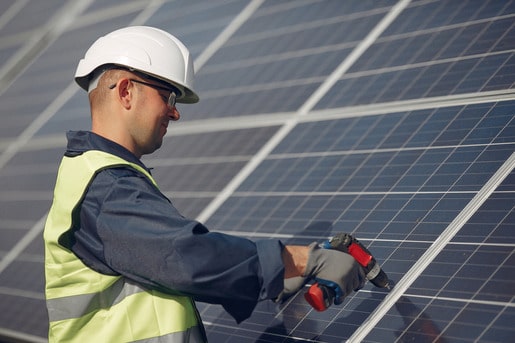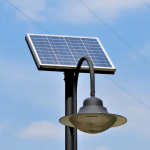Enlightened Choices: Regulatory and Financial Considerations for Commercial Solar Street Lights in Australia
Have you ever considered the regulatory and financial intricacies of installing commercial solar street lights in Australia? Making an enlightened choice involves not just selecting the right technology but also understanding the broader context, including government incentives, regulatory compliance, and financial implications. This guide dives deep into these aspects, providing a comprehensive overview for businesses and municipalities considering this sustainable investment.
Government Incentives and Rebates Of Solar Street Lights
Tapping Into Government Incentives

What financial support does the Australian government offer for solar street lighting? One significant incentive is the provision of Small-scale Technology Certificates (STCs), which can significantly reduce the upfront cost. By understanding and utilizing these incentives, businesses can offset initial expenses, making solar installations more affordable.
Impact on Upfront Costs
How do these incentives affect your initial investment? By taking advantage of available rebates and certificates, the initial cost of installing solar street lights can be considerably reduced, making solar a more attractive option compared to traditional lighting solutions.
Compliance with Australian Standards
Navigating Australian Standards
Why is compliance with Australian standards crucial for installing solar street lights? Adhering to standards ensures that installations are safe, perform reliably, and are eligible for government incentives. This section provides an overview of relevant standards, such as AS/NZS 4509 Stand-alone power systems.
Ensuring Safety and Performance
How does compliance influence operational effectiveness? Meeting or exceeding these standards not only ensures safety and efficiency but also secures eligibility for governmental financial incentives, enhancing the investment appeal.
Local Government Regulations and Approvals Of Solar Street Lights
Understanding Local Requirements
What do local governments require for the installation of solar street lights? Each locality may have specific regulations and required permits. This part explores the importance of engaging with local councils to ensure that all necessary approvals are in place before installation begins.
Securing Necessary Permits
Why are permits essential? Obtaining the right permits is not just a legal formality—it also ensures that the installation aligns with local urban planning and environmental guidelines, preventing future legal or operational issues.
Financial Considerations Of Solar Street Lights
Analyzing Cost-Benefit
What are the long-term financial benefits of solar street lights compared to traditional grid-powered lights? This section conducts a cost-benefit analysis, highlighting potential savings on energy and maintenance costs.
Calculating Return on Investment (ROI)
How do you determine the ROI of installing solar street lights? We’ll discuss the factors that influence ROI, including reduced energy costs, maintenance savings, and the lifespan of the lighting system.
Financing Options Of Solar Street Lights
Exploring Financing Avenues
What financing options are available for businesses looking to install solar street lights? From loans to leasing options, this part outlines the various financial pathways available, each with its benefits and considerations.
Choosing the Right Financing
How do you choose the best financing option? Evaluating each option’s long-term benefits and constraints can help businesses make an informed decision that aligns with their financial strategies.
Tax Implications Of Solar Street Lights
Leveraging Tax Incentives
What tax incentives are available for investing in solar energy? This section explains the tax deductions and incentives that further reduce the cost burden of installing solar street lights.
Enhancing Financial Viability
How do tax incentives contribute to the project’s financial viability? By understanding and applying these tax benefits, businesses can significantly improve the economic case for transitioning to solar street lighting.
Maintenance and Lifecycle Costs Of Solar Street Lights
Estimating Ongoing Costs

What does it cost to maintain solar street lights over their lifespan? While solar lights generally require less maintenance than traditional lights, ongoing costs must be considered. This includes periodic cleaning of solar panels, battery replacement, and system checks.
Impact on Financial Viability
How do these costs affect financial planning? Planning for lifecycle costs ensures that the project remains financially viable and continues to deliver cost savings over the years.
Demonstrating Real-World Impact
What has been the tangible impact of these projects? Examining these success stories provides concrete examples of cost savings, improved energy efficiency, and enhanced sustainability, offering valuable insights for potential adopters.
Navigating the regulatory and financial landscapes is crucial for anyone considering commercial solar street lights in Australia. By thoroughly understanding these aspects, businesses can make informed decisions that maximize benefits while ensuring compliance and optimizing financial returns. Embracing these considerations will light the path to a brighter and more sustainable future.
FAQs:
- How long does it take to recover the initial investment in solar street lighting through energy savings?
- Typically, the payback period can range from 5 to 10 years, depending on the specifics of the project and local conditions.
- Are there specific Australian regions where solar street lighting is more financially viable?
- Solar street lighting is especially viable in regions with high sunlight exposure, such as Queensland and Western Australia, but can be cost-effective nationwide due to Australia’s generally sunny climate.
- Can solar street lights operate effectively in areas with frequent cloud cover?
- Yes, modern solar street lights are equipped with batteries that store enough energy to operate effectively for several days without direct sunlight, mitigating the impact of cloudy weather.
- What are the most common maintenance issues with solar street lights?
- Common issues include battery degradation, dirt accumulation on solar panels, and occasional LED malfunctions, all of which can be managed through routine maintenance.
- How does the Australian government support municipalities wishing to switch to solar street lighting?
- The government offers various forms of support, including grants, technical assistance, and financial incentives through programs tailored to encourage renewable energy adoption in public infrastructure.
Read more about commercial solar street lights
Enlightened Choices: Exploring the Benefits of Commercial Solar Street Lights in Australia
Shedding Light on Solar Street Lights in Australia: Understanding How They Work









